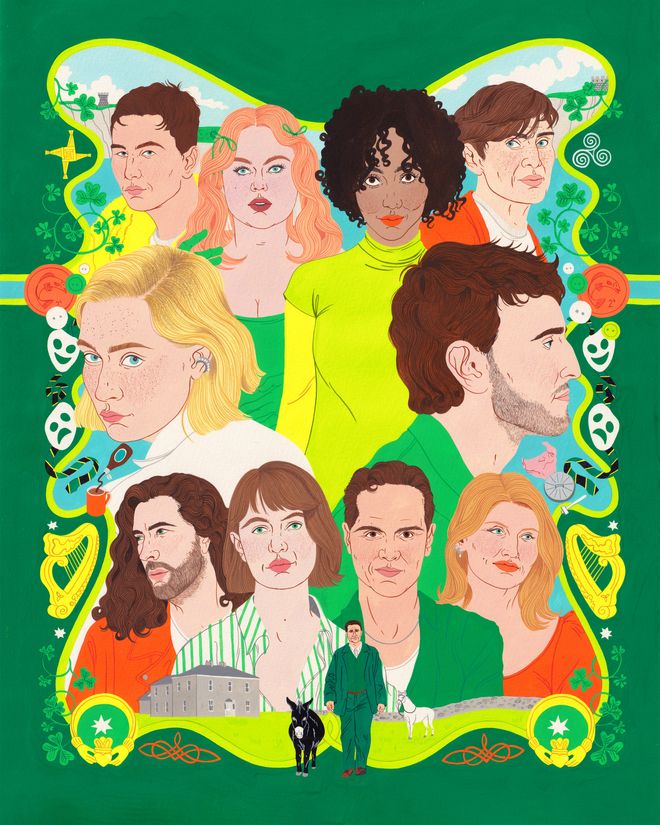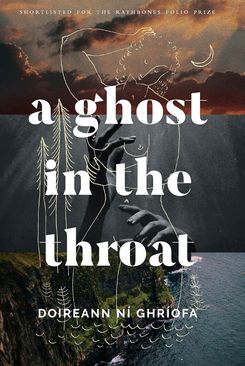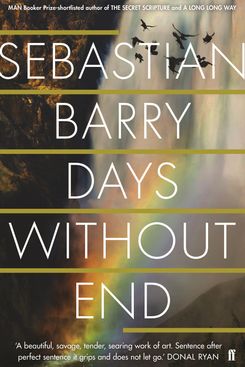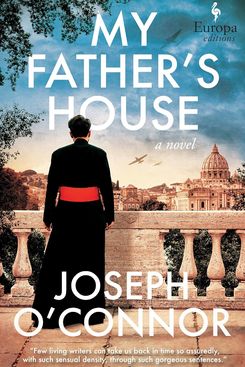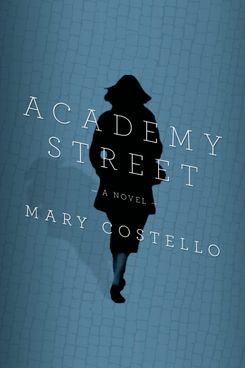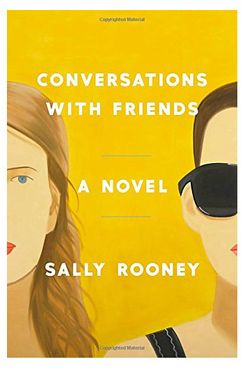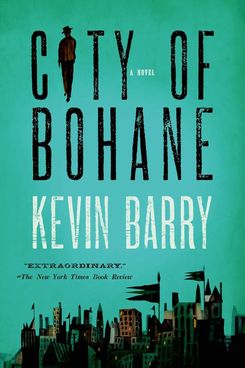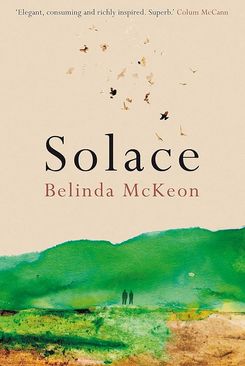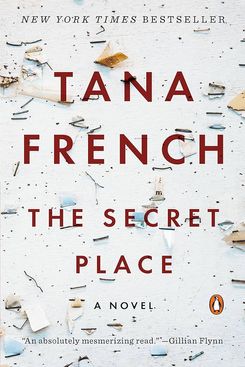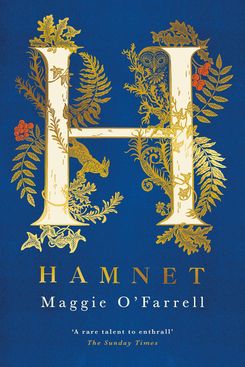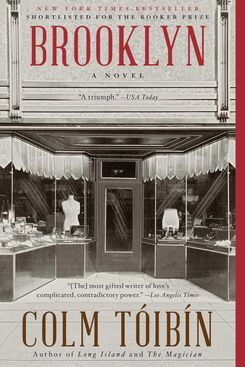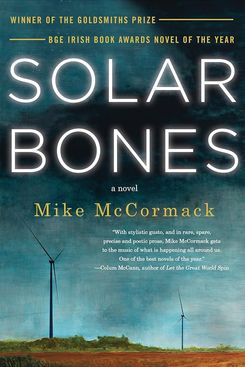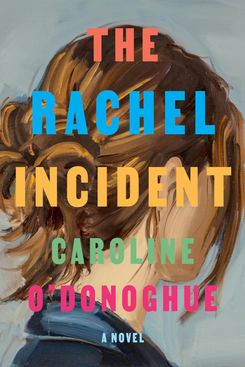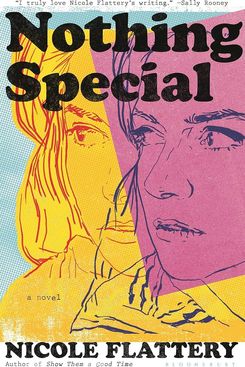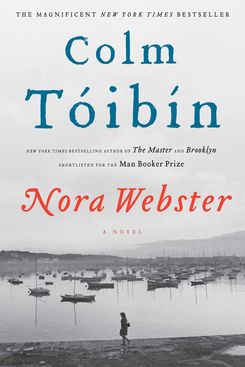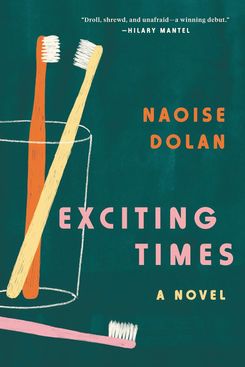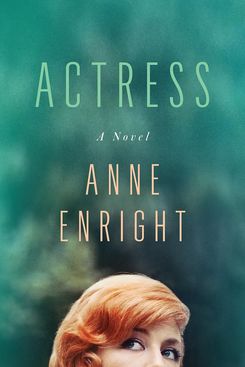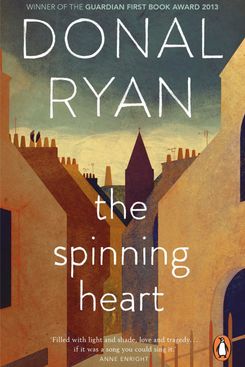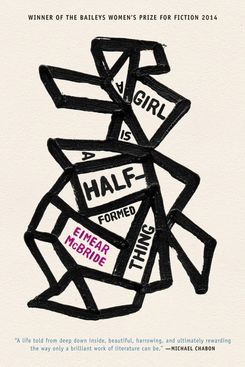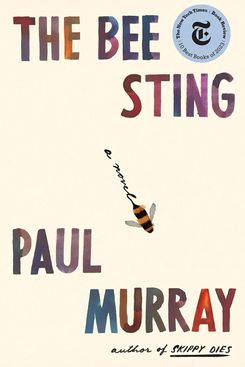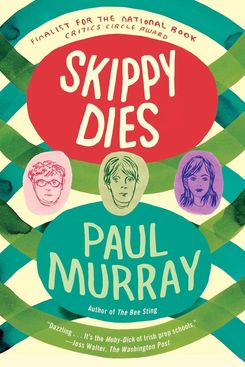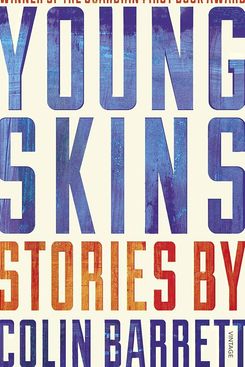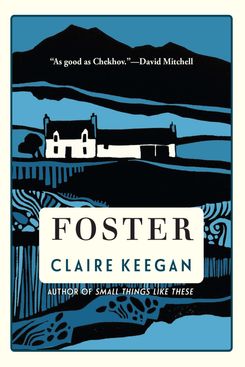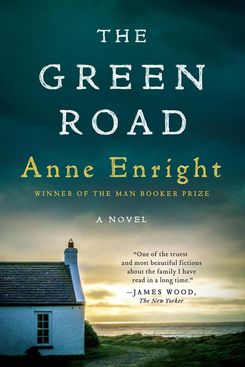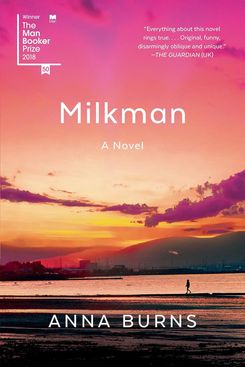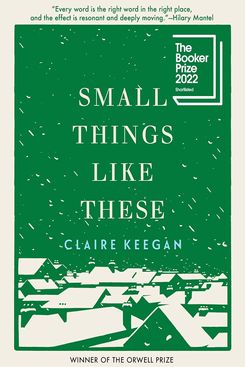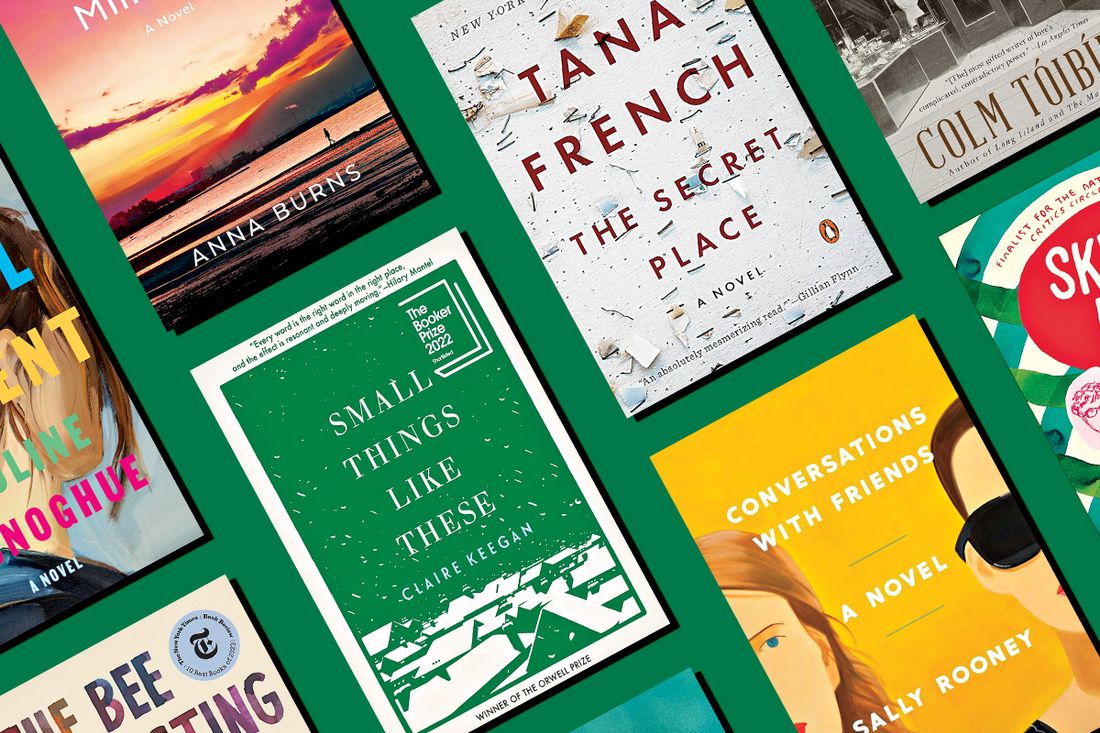
It’s a truism that the Irish cast a long and influential shadow over English-language literature. James Joyce appears near the top of most lists of influential writers, and more recently, Sally Rooney discourse clogs our feeds every time she publishes a new novel. Last year, four of the five writers longlisted for the Booker Prize were Irish.
Considering that heritage, we asked a small group of writers and editors to choose the best Irish novels of the past 15 years .Why 15? It seemed enough time to encompass Colm Tóibín’s influential best seller Brooklyn; the post–Celtic Tiger downturn, when Ireland’s economy cratered in the midst of a global recession and fueled the sardonic opuses of Paul Murray; and Anna Burns’s surprising 2018 Booker win for her modernist retelling of the Troubles.
The Pluck of the Irish
Still, the time period is admittedly arbitrary. “I think the creation of The Stinging Fly magazine in 1997 is significant as there is an identifiable cohort of writers associated with it,” says Irish Times books editor Martin Doyle, referring to the influential magazine that published the early works of writers like Rooney and Kevin Barry and has a publishing arm as well. “But success has many parents, failure is an orphan!”
The process was mostly democratic; the more appearances a book made on our critics’ lists, the higher it ranked. That also explains some entries by more than one author and the presence of one or two short-story collections.
As the list developed, certain themes emerged: Irish emigration, the tension between cities and small towns, the recession of the mid-aughts, a playfulness with language and genre. And the breadth of talent. Happy reading. — Tomi Obaro
25.
A Ghost in the Throat by Doireann Ní Ghríofa (2021)
On paper, this book sounds impenetrable: It’s an autofictive retelling of a centuries-old lover’s lament, written in English and Irish Gaelic. Doireann Nì Ghrìofa (the character but also the author) is absorbed by her work translating the poem “Caoineadh Airt Uí Laoghaire” (“The Lament for Art O’Leary”), written by his wife, Eibhlín Dubh Ní Chonaill, from Irish to English. She becomes intertwined with the poem and its author, scrounging through libraries to put together a biography of Ní Chonaill, hoping to understand herself and her desires by getting under the skin of a poet who describes drinking handfuls of her murdered husband’s blood. The novel, and I would argue it’s a novel, plays with form: It’s also an academic text, a thriller, and a translation. Or rather, it’s about the act of translation — understanding your life through someone else’s. It has the skewy internal logic of something like Tom McCarthy’s Remainder and the feral, fecund bodily obsession of Miranda July’s All Fours. It cracks open the past like an egg, and something new slouches from out within. — Ailbhe Malone
24.
Days Without End by Sebastian Barry (2016)
This novel deals with one of Irish literature’s enduring preoccupations: the search for a better life in America. We’re a long way from Colm Tóibín’s Brooklyn, however, as we follow the life of Thomas McNulty. His mother and sister dead in the Famine, Thomas eventually finds himself on the Oregon Trail, caught up first in the Indian Wars in Wyoming and then in the Civil War in Georgia; in these fights, he encounters several of his countrymen, all of them escaping their “hard origins.” And yet Days Without End is also a beautiful and transgressive love story, of the romance between Thomas — occasionally Thomasina — and his companion John Cole as they endure all these hardships and together raise a Sioux girl named Winona. This barely believable family unit is at the heart of the novel’s greatness: its understanding of love, folly and the sacrifice at the heart of parenthood — as McNulty calls it, “that work, trying to earn the pennies to feed their families.” — Cameron Yule
23.
My Father’s House by Joseph O’Connor (2023)
Based on the extraordinary true story of an Irish priest in the Vatican who helped save thousands of prisoners during the Nazi occupation of Rome, this book centers on Monsignor Hugh O’Flaherty, who was responsible for saving 6,500 Allied soldiers and Jews during the Second World War. O’Connor focuses on a mission on Christmas Eve 1943, where O’Flaherty and a team of seven others drop money around the city to help evacuate prisoners from safehouses before an expected influx of Nazi soldiers early in the New Year. The setting and era is vibrantly depicted, as expected from this award-winning writer of historical fiction, but the real success of the book is the author’s ventriloquistic way with voice, his ability to switch with ease between characters, perspectives, tenses, metafictional devices, without ever losing control of the story. — Sarah Gilmartin
22.
Academy Street by Mary Costello (2015)
Costello’s debut publication, the short-story collection The China Factory (2012), marked her as a fresh new voice in Irish fiction, unafraid of tackling difficult themes like parental loss, misogyny, and sexual abuse. The Galway writer’s style harks to an older tradition of Irish writers such as William Trevor, Mary Lavin, and, for a more contemporary comparison, Colm Tóibín. Costello’s evocative, wonderfully observed debut novel Academy Street has overtones of Tóibín’s Brooklyn. Both tell stories of young women who emigrate from Ireland to New York, though Costello’s protagonist, Tess Logan, arrives a decade later, in the 1960s, at a time of great change. Before this we see her formative years in rural Ireland. Costello’s elegant prose and reflective tone allow space for the reader to fully envision the challenges faced by Tess in her adopted home. — Sarah Gilmartin
21.
Conversations with Friends by Sally Rooney (2017)
Poll your group chats, as I did, and you might find that opinions are divided about which Sally Rooney book reigns supreme. Normal People, Rooney’s second novel, has the advantage of being a more straightforward love (and lust) story, tracking the anguished relationship between a lonely nerd and a maybe-even-lonelier jock over the course of five years (it also had the much better TV adaptation). But her first book remains the most purely Rooney. Published when she was 26, the novel follows Frances and Bobbi, two friends and ex-girlfriends at Dublin’s Trinity College, whose alternately prickly and affectionate conversations pinned something to the page that didn’t seem to exist in literature before: a remarkably alive-seeming specimen of a rising generation preternaturally acquainted with the language needed to discuss leftist politics and sexuality but just as incapable of articulating their own feelings as any 20-something has ever been. Frances’s budding affair with the semi-famous actor Nick, an older man, is gloriously awkward and sexy, setting into motion a series of jealousies between herself, Bobbi, and Nick’s wife — and challenging her self-definition as someone who is “anti love as such,” as she puts it. Their bizarre love quadrangle is both genuinely moving and comic. — Emma Alpern
20.
City of Bohane by Kevin Barry (2012)
In Barry’s debut novel, he conjured up an entire city — there’s even a map to help you get your bearings — with its own dialect, fashions, and feuds. Set in a futuristic Irish town called Bohane, Logan Hartnett is the dapper godfather of a gang called Hartnett Fancy, and he’s dealing with stressors on all sides. His old rival is back in town, his henchmen are getting ambitious, his wife wants him to go straight, and his mother is ancient but dangerous. Barry delivers this story in short chapters, owing a debt to The Sopranos and Deadwood, West Side Story and Gangs of New York. It’s hugely entertaining, fantastic yet believable, with cracking dialogue, intriguing characters, and thrilling set pieces. — Martin Doyle
19.
Solace by Belinda McKeon (2011)
On a “rare hot Saturday” in a summer that is “already halfway through,” Mark, a Trinity student, finds himself torn between composing the second chapter of his Ph.D. (if he doesn’t submit a successful draft soon, he will lose funding) and returning to the family farm to cut and bale hay (an unspoken imperative for farmers’s sons since time immemorial). He chooses neither and ends up in the “plastic” bars and house parties of Dublin during the Celtic Tiger era, when Ireland’s economy was booming. There, he meets Joanne, a trainee solicitor who happens to be from his hometown and whose father is an old enemy of his father’s. Told from the alternating perspectives of Mark, Joanne, and Mark’s father, Tom, Solace is a love story sliced through by tragedy and a father-son story intensified by circumstance. It has an innate understanding of the society in which it is set — the unspoken rules of rural and urban life; the shifting social mores of a newly monied land; the historical and generational influences that shape individual lives. — Niamh Donnelly
18.
The Secret Place by Tana French (2014)
You might not expect an offering from a crime-fiction series to be essential to the modern Irish literary canon, but Tana French doesn’t write ordinary murder mysteries. The six books in her “Dublin Murder Squad” series capture the city in all of its current-day squalor and glory in poetic prose, brimming with rich portraits and colorful dialogue of an assortment of Dubliners. The Secret Place is set over the course of one action-packed day (with plenty of flashbacks) at St. Kilda’s, a boarding school for girls where Holly Mackey, daughter of Detective Frank Mackey, is a third year. When Holly discovers what she believes to be a clue to an unsolved murder of a boy who was found on the school grounds the previous year, she bypasses her dad and goes directly to his former protegé for help. The characters in every “Dublin Murder Squad” book are masterfully developed, but what places The Secret Place over the top are French’s indelible depictions of teenage girls. The squabbles and obsessions of queen bees and lesser insects become downright menacing in her hands. — Maris Kreizman
17.
Hamnet by Maggie O’Farrell (2021)
That one of the best novels on Shakespeare never names Shakespeare and isn’t really about Shakespeare is, well, quite Shakespearean. That it was written by an Irish woman speaks to the breadth and heft of Irish writing today. O’Farrell, author of, among others, This Must Be the Place (2016) and I Am, I Am, I Am (2017), is one of many Irish people who have lived most of their lives elsewhere. (Born in Derry, she relocated to the U.K. at a young age.) Hamnet, undoubtedly her chef d’oeuvre, tells of a family in 1590s Stratford, England, during the bubonic plague. In clipped, haunting prose, O’Farrell brings to life the other ghost of Hamlet (the spelling difference, a mere foible of 16th-century orthography) — that of Shakespeare’s lost son, who died at 11 years old. And she does so by zeroing in on a mother and her grief. Those who have not yet read this powerful work should brace themselves for its perfect closing lines. — N.D.
16.
Brooklyn by Colm Tóibín (2009)
Tóibín, a leading figure in Irish literature who has written 11 novels along with works of nonfiction and poetry, can do many things on the page. He’s inhabited the consciousness of Henry James (The Master, 2004) and examined the complexities of Thomas Mann (The Magician, 2021). But it’s the restraint and subtlety of Brooklyn that make it so exquisite. When Eilis Lacey, the central character, leaves the bleak economic landscape of 1950s Ireland and crosses the Atlantic in search of a better life in America, she is tracing a journey writ into our annals. But it’s her return, in tragic circumstances, to her hometown of Enniscorthy (the small Wexford town in which Tóibín grew up and the setting for several of his novels) that lifts this story into a tense and powerful novel. — N.D.
15.
Solar Bones by Mike McCormack (2017)
Since Molly Bloom’s monologue at the end of Ulysses, single-sentence narratives have been linked to Irish experimentalism. Solar Bones places itself in that tradition: One unspooling sentence covers the events of the life of McCormack’s narrator, Marcus Conway. Throughout the novel, Marcus chronicles a dramatically changing Ireland, from his upbringing on a farm to his present, Skyping his son in Australia. This is a very beautiful novel, not only in its rendering of the West Irish Coast, but in its celebration of small-town life that it perceives as being lost. — C.Y.
14.
The Rachel Incident by Caroline O’Donoghue (2023)
From a cursory pluck through its first few pages, one might imagine this is another book about an English professor sleeping with a student, but that’s merely the first of several misdirections that preface this funny and moving novel. Our titular heroine is Rachel Murray, a journalist now living in London, given to recalling her younger days as a student in Cork. There, she developed a close friendship with closeted co-worker James and an infatuation with her professor, Fred. What follows is a breezily original story about the pains and pleasure of friendship, coming out, youths spent preoccupied with idle romantic pining, and the drudgery of precarious work. Throughout, there is a sort of metatexual awareness of the type of book she’s not writing. In one scene, Rachel observes that she’s read umpteen novels about the bad things that happen when your English professor sleeps with you, but none about the bad things that happen when they refuse to. It’s a winningly original dart of comic fiction that showcases O’Donoghue’s skill. — Séamas O’Reilly
13.
Nothing Special by Nicole Flattery (2023)
A teenage girl named Mae becomes subsumed into the strange and enchanting world of Andy Warhol’s Factory in this sublime debut novel from the author of the short-story collection Show Them a Good Time. It is 1960s New York, and like a modern Bartleby the Scrivener, Mae is tasked with transcribing what will become a, A Novel — Warhol’s famously unreadable 1968 doorstopper, consisting of recordings of his eclectic New York clique. Were Nothing Special “just another Andy Warhol book,” it might feel clichéd, but Flattery neatly swerves familiar territory. The notorious artist is a spectral presence — the book’s beating heart is its narrator and her relationships with her mother, mother’s boyfriend, and fellow typist Shelley, as well as her relationship with the culture around her. — N.D.
12.
Nora Webster by Colm Tóibín (2014)
In small-town 20th-century Ireland, the concept of boundaries only ever applied to the land. The titular protagonist finds this out for herself after her schoolteacher husband dies suddenly, leaving her alone to raise four children in the market town of Enniscorthy in the Irish Southeast. Her attempts to maintain her dignity and personhood in the face of prying neighbors amount to a studied, moving account of a grieving woman whose inner and outer selves are in constant tension. Like his American contemporary Elizabeth Strout, Tóibín has set many of his novels in or around the town of Enniscorthy, and one of the pleasures of the book is the way he captures the atmosphere and mind-set of a close-knit community, the cadences of speech, the everyday life that continues on as normal, in bitter contrast to the Webster family, caught in the long moment of their grief. Cameos of familiar figures (the mother of Eilis Lacey from Brooklyn, for one) indulge the reader and give depth to the backdrop, but the chief success of this novel is the characterization of its heroine, who is based on Tóibín’s mother. — S.G.
11.
Exciting Times by Naoise Dolan (2020)
With her debut novel published when she was 27, Dolan arrived fully formed. An Irish woman teaching English as a foreign language in Hong Kong is the story’s central fulcrum. The year is 2016. Ava, a directionless 22-year-old, has traversed continents because she was “sad in Dublin, decided it was Dublin’s fault, and thought Hong Kong would help.” By day, she teaches the King’s English to a group of rich Hong Kong children with western names. In her off-hours, she ends up in a complicated entanglement with Julian, an upper-class English banker, and Edith, a nouveau-riche Hong Kong lawyer. From this soup of clashing socioeconomics, Dolan, a comic writer, for whom language is both a central preoccupation, produces a fresh take on the novel of manners. — N.D.
10.
Actress by Anne Enright (2020)
Enright’s talent is her mastery of interior life. There is a casual brilliance to her descriptions of near-imperceptible emotions. In Actress, Norah is the daughter of Katherine O’Dell, the famous Irish actress of the novel’s title. She narrates her mother’s life, and her own, braiding the two together in a voice that is occasionally awestruck, sometimes pitying, often cruel. The central plot threads numerous puzzles for the reader to track; Katherine’s own secret birth in London, the oblique nature of her relationships with the many male actors who pass through Norah’s childhood home like an 18th-century salon, and the overarching mystery of who among them, if any, might be Norah’s own father. This is a book about motherhood and daughterhood, albeit an unfussy one, filled with wit and warmth but utterly devoid of schmaltz. — S.O.
9.
The Spinning Heart by Donal Ryan (2014)
The major preoccupations of Irish fiction in the 20th century were disquiet at social and moral conventions amid Ireland’s treacle-slow march toward modernity. Novels in the post-2010 period are about the very same things, albeit shot through with the seismic shocks of the post–Celtic Tiger financial crisis: economic turmoil, social upheaval, and—worse, still, in an Irish context — the feeling that one has been rendered a blundering fool. The Spinning Heart is an early, exquisite document of this genre. Its plot begins with the plight of Bobby Mahon, the kind-hearted foreman of a building crew that’s been badly shafted by a debt-riddled boss who’s fled the country owing vast amounts of money to the employees, creditors, and customers in their small town. From there, however, more strands emerge. Every character in this story gets their own voice — the novel’s polyphonic structure comprises 21 first-person chapters, a daisy chain of regret, anger, humor and self-loathing. Written in the demotic style of his native Tipperary, Ryan’s characters sink you deep into the page, pulling you into their mundane lives. — S.O.
8.
A Girl Is a Half-Formed Thing by Eimear McBride (2014)
McBride wrote her debut novel at 27 and finally published it nearly a decade later, after toiling in a series of office jobs. She started reading James Joyce’s Ulysses on the train to one of these gigs, and her writing is deeply influenced by the author. The book, about a young girl growing up with a disabled brother and religious mother, is full of Joyce’s characteristic stream of consciousness: blunt, sensory, and immediate. A reader might be forgiven for hesitating at the prospect of inscrutable fragments and hypersubjectivity. But at a time when many writers have mined the Victorians to produce tidy love stories, McBride manages to recuperate the century-old pleasures of formal transgression. She brings a feminist perspective to this tradition, examining the Catholic Church and patriarchy with an unsentimental frankness. — Brandon Sanchez
7.
The Bee Sting by Paul Murray (2023)
Murray manages to create a state-of-the-nation novel inside a family drama within a biting satire of post-crash Ireland. Clocking in at over 650 pages, the novel is split up among the four members of the Barnes family, who undergo a dramatic reversal of fortunes as their car dealership appears on the brink of insolvency. It opens with their teenage daughter, Cassie, and innocently adventurous young son, PJ, then pivots to their mother, Imelda, who is barely keeping it together, and her husband, Dickie, hell-bent on tearing himself apart over his financial ruin and buried secrets. This is a sad book that rewards the reader with laughter, all propelled by clever flourishes: PJ’s video game diction, or Imelda’s breathless, punctuation-free prose that drops you immediately into the hypervigilance and self-awareness that plagues her every thought. Each character possesses that most relatable and undying of false convictions: that no one else can know their pain or feel another like it. — S.O.
6.
Skippy Dies by Paul Murray (2010)
Murray’s Booker Prize–longlisted sophomore novel set in a fictional Dublin boarding school took seven years — the length of a secondary education — to write. Skippy is 14-year-old Daniel Juster, nicknamed for his prominent teeth, one of many examples of teenage cruelty that give the book its dark, comic heart. After he dies in the opening chapter, the novel explores events in the months leading up to this tragedy. The structure is like a planetary system with its multiple characters and fascinating satellites: his best friend Ruprecht, a tubby genius; Lori, his unrequited love; Carl the psychopath; Howard the Coward; Father Green a.k.a. Pere Vert, the dodgy French teacher. It sprawls without becoming slack, akin to Bolaño’s 2666 or Pynchon’s Gravity’s Rainbow. — M.D.
5.
Young Skins by Colin Barrett (2015)
Long before Barrett wrote his first novel (the 2024 Booker-longlisted Wild Houses), he was already a household name in Irish literature for Young Skins, his collection of seven short stories about disaffected men, set mostly in the (fictional) backwater town of Glanbeigh. One character strikes out after discovering his on-again-off-again lover is engaged. An alcoholic service-station worker goes out on the town for the first time after an incident that left him disfigured. An ex-boxer balances his duties to his autistic son and his enforcement duties for the local drug dealer. Two men skive off the funeral of a woman they both loved. Violence simmers, then rises to the surface. An unlikely heat presses down. Barrett flexes his descriptive muscle in this richly atmospheric book. — N.D.
4.
Foster by Claire Keegan (2010)
This novella-length story, first published in The New Yorker, combines the precision of the short-story form with the emotional heft of a novel. The generous, detailed opening line is indicative of Keegan’s style on the whole, sensual writing that invites the reader in and leaves plenty of room for them to draw their own conclusions: “Early on a Sunday, after first Mass in Clonegal, my father, instead of taking me home, drives deep into Wexford towards the coast, where my mother’s people came from.” What follows is a bright, devastating tale of a young girl sent to stay with relations for the summer while her mother has another baby. Deposited at the farm by her selfish, careless father, the girl’s initial angst and timidity is teased out of her by a loving couples with losses and pains of their own. Foster is one of those books to lose an afternoon in, best read in a single sitting to feel the full impact of its brilliant ending. But as with all great stories, it is also one to go back to, to linger in, revealing something new with each reading. — S.G.
3.
The Green Road by Anne Enright (2015)
Enright won the Booker Prize in 2007 for The Gathering, a defiant and probing novel on a large Irish family’s dark past through the viewpoint of an adult daughter. The Green Road tells the story of another family, the Madigan clan, from multiple perspectives, showcasing Enright’s skill with voice and her ability to tie the various narrative strands together in a shape-shifting novel loaded with insight and wit. The first half of the book follows the four Madigan siblings, Hanna, Dan, Constance, and Emmet, from childhood into adulthood, across small-town Ireland, the gay scene in ’90s New York, impoverished Mali, and contemporary Dublin, before contracting again for a claustrophobic, dramatic Christmas under the roof and formidable gaze of the matriarch Rosaleen in Ardeevin, County Clare. Enright’s portrait of the mother is terrific — entitled, manipulative, addled, forlorn — as is her characterisation of each of the siblings whose personalities are formed, or deformed, in their mother’s shadow. When Rosaleen disappears suddenly after the inevitable post-turkey family fight, her adult children are left scrambling for her safe return. This novel was nominated for the Booker Prize the year it was published, not least because of the superb, first-person-plural section on Dan’s life as a closeted gay man in New York. An expansive, funny, shrewd story about family ties that both anchor and restrain. — S.G.
2.
Milkman by Anna Burns (2018)
The 30-year conflict in Northern Ireland was long avoided by British publishers of Irish literary fiction, with only a handful of books by Deirdre Madden, Jennifer Johnston, Bernard MacLaverty, Eoin McNamee, and Brian Moore breaking the silence. The Booker Prize–winning success of Milkman was therefore game changing. The novel is set in an unnamed city that is recognizably the author’s native Belfast. The 18-year-old protagonist, known only as “middle sister,” lives in an enclave under the coercive control of a militant faction opposed to the repressive, discriminatory state, its groupthink-prone inhabitants therefore doubly besieged and surveilled. The eponymous Milkman, a much older, predatory paramilitary, continually stalks her. She takes refuge in 19th-century literature: “I did not like twentieth-century books,” she explains, “because I did not like the twentieth century,” reading as she walks to navigate this hostile environment whose inhabitants are trapped by history, poverty, and paranoia. Burns’s feisty, feminist narrative is circuitous rather than linear, its repetitiveness reflecting the entrapment of its characters, but it is surprisingly, surpassingly funny, with sly, sometimes absurdist humor. — M.D.
1.
Small Things Like These by Claire Keegan (2021)
Has Keegan ever written a bad sentence? The author from County Wicklow is the rarest of sorts: a literary giant who has built her career on the short story. On home soil, her brilliance has long been recognized — her early collections, Antarctica (1999) and Walk the Blue Fields (2007), marked her as an uncommon talent — and in recent years her international acclaim has grown exponentially, perhaps owing to the adaptation of her 2010 story, Foster, into an Oscar-nominated film (The Quiet Girl). Small Things Like These is Keegan at her finest. There is a certainty to her sentences that sets her alongside past masters (your William Trevors, your Anton Chekhovs) and a singular beauty to her observations. This is Keegan’s first novel, and at just 116 pages, it continues to honor the power of brevity. It is 1985 in New Ross, a small port town in County Wexford in Ireland’s Southeast. Christmas is coming, and Bill Furlong, a local coal merchant, is out of sorts. Touching 40, a husband and a father to five daughters, he is beginning to wonder what the days are for. In the country at large, dole queues are growing, heating bills are going unpaid, and young people are fleeing to London, Boston, and New York. One day, as he is delivering an order, Furlong encounters a desperate young woman in the convent coal shed. In his predicament over what to do, and through robust, exacting prose, the fallacies of an entire society begin to unravel. — N.D.


